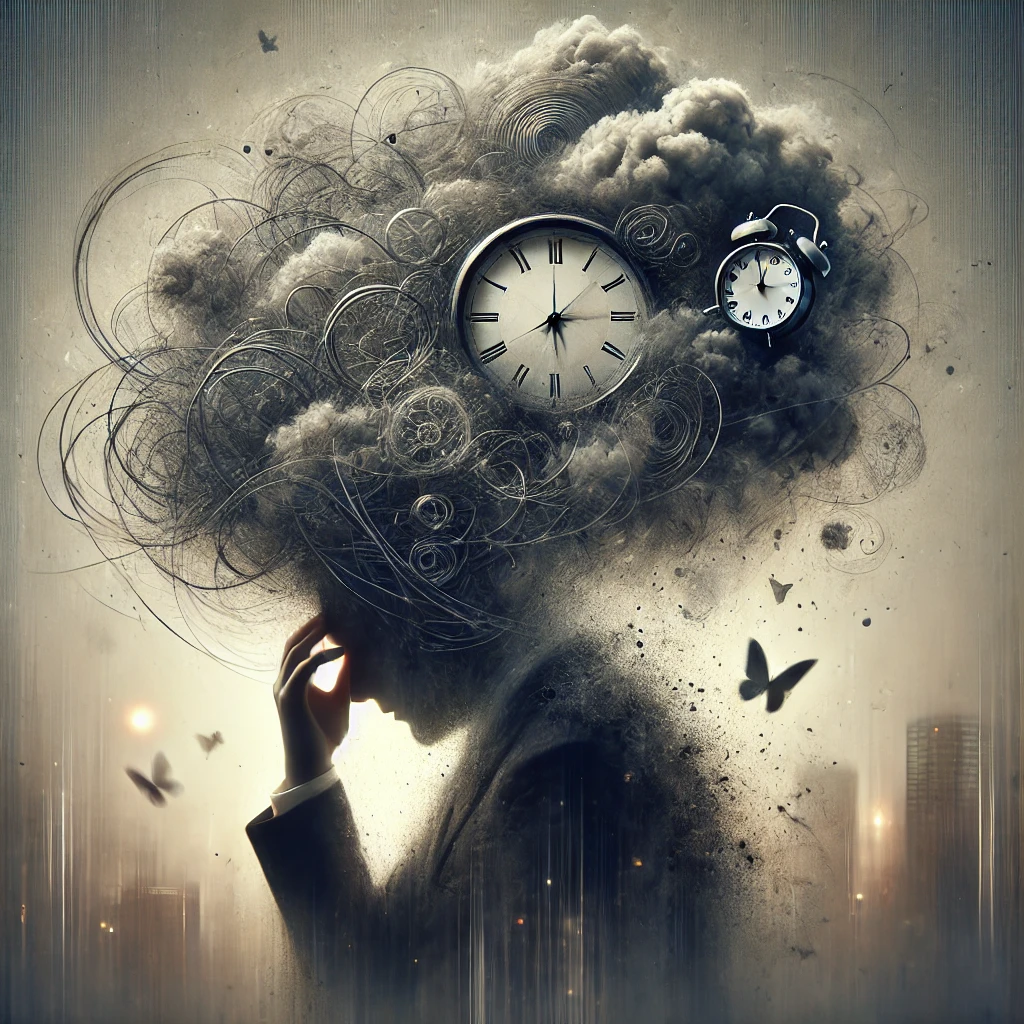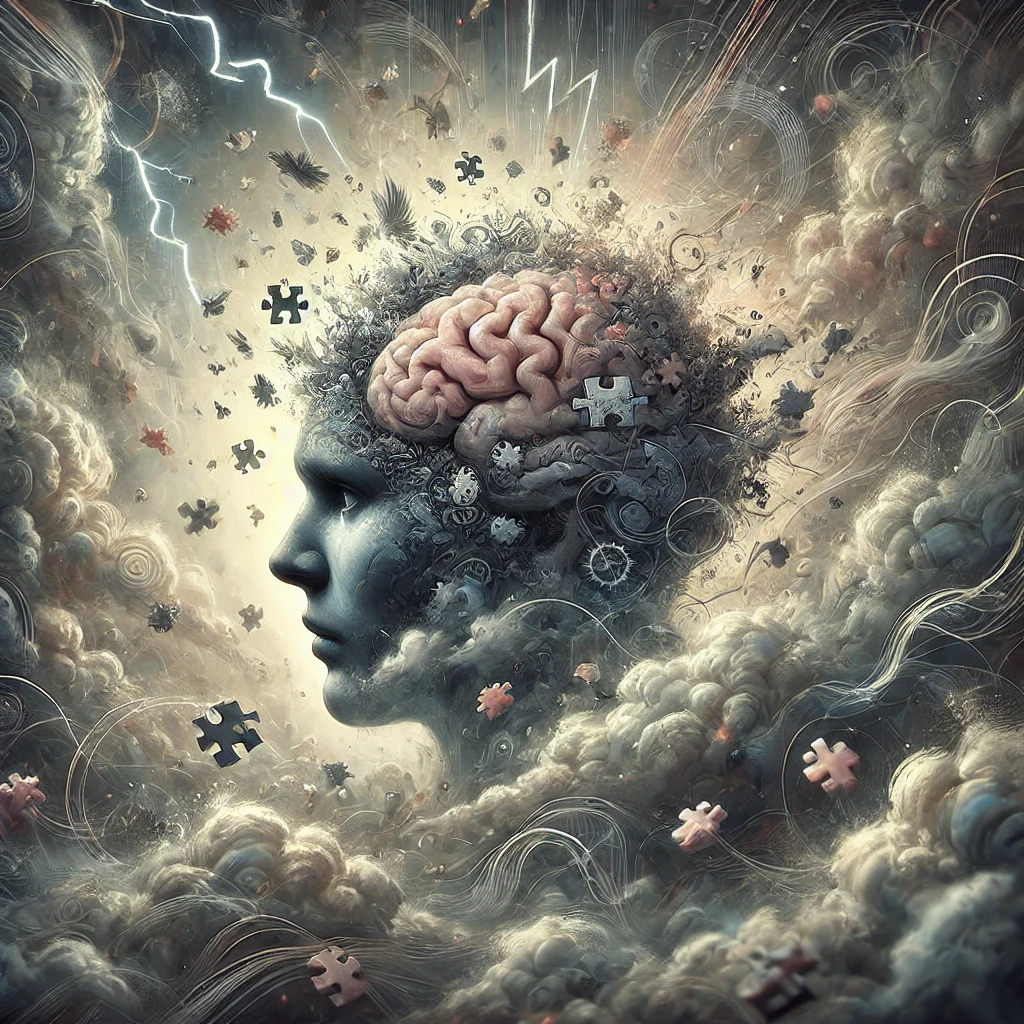Purpose of This Article
The purpose of this article is to explore and deeply understand the symptom of anxiety-related blurred, foggy, or distorted vision. We aim to offer a compassionate and thorough explanation of why this symptom occurs, how it is connected to chronic overstimulation of the nervous system, and how it can be misinterpreted as something more serious. By shedding light on this often terrifying yet common experience, we hope to provide reassurance, clarity, and comfort to those navigating the distress of vision-related changes due to prolonged anxiety.
It can be deeply unsettling to wake up one day and realize that the world looks “off.” You glance around and things seem blurry, hazy, or even distorted—as if there’s a layer of fog between you and reality. Maybe it feels like your prescription glasses suddenly stopped working, or like your eyes just won’t “focus right” no matter how much you blink. You might wonder if you’re developing an eye disease, neurological condition, or even losing your grip on reality.
But what if this unsettling shift in vision is not a sign of a serious eye or brain condition, but rather a natural byproduct of chronic nervous system overdrive?
Blurred, foggy, or distorted vision is a surprisingly common—though rarely talked about—symptom among people living with prolonged stress and anxiety. It can feel incredibly frightening, especially because vision is something we rely on every second of the day. But it’s important to know that this is not a sign that something is permanently wrong with your eyes or your brain. It’s often the body’s way of reacting to extended periods of sympathetic nervous system activation—sometimes referred to as chronic fight-or-flight mode.
This article will explain how and why vision can be affected in this way, and why, even though it feels so real and alarming, this experience is often a reversible consequence of chronic stress overload rather than a medical emergency.
How Does Vision Distortion from Anxiety Feel?
- “Like I’m seeing the world through a dirty window”
Everything feels faintly smudged or out of focus, even though your eyes seem to be working normally. - “It’s as if there’s a light fog or haze between me and the world”
A soft blur that dulls colors and edges, making things feel distant or surreal. - “It’s like my vision is off… but my optometrist says my eyes are fine”
Eye exams come back normal, but the sensation remains, leaving you frustrated and confused. - “Things look dreamlike, almost like I’m watching the world on a screen”
A feeling of detachment or unreality in visual perception, often paired with derealization or depersonalization. - “My vision feels strained and unstable, like it’s hard to focus”
Even simple tasks like reading or looking at screens can feel overwhelming or impossible. - “Everything looks too bright, too dim, or just ‘wrong’ in some way”
The visual world may appear overly sharp or washed out, and lighting changes can feel jarring or intense. - “Sometimes it feels like I’m going cross-eyed, even when I’m not”
A sensation of eye strain or muscle fatigue, sometimes leading to perceived double vision or odd depth perception. - “It comes and goes randomly—sometimes worse in bright stores, on my phone, or when I’m tired”
The symptom may fluctuate throughout the day, often intensifying during periods of high stress, poor sleep, or sensory overload. - “It makes me feel like I’m going crazy or something’s deeply wrong with me”
The disconnection from normal visual experience can fuel fears of neurological illness, vision loss, or even psychosis. - “There’s a weird delay, like what I’m seeing and what I’m processing aren’t lining up”
A sensation of lag or mismatch between vision and thought can contribute to intense anxiety and confusion.
Why This Symptom Feels So Real and So Scary
- Vision is one of our primary survival tools
We rely on our sight more than any other sense to navigate the world safely. When our vision feels “off,” our brain interprets it as a potential threat, often activating more anxiety in response. - Distorted vision mimics symptoms of serious health conditions
This includes neurological disorders, retinal issues, and dissociative episodes—leading to fear and catastrophizing. - The experience disconnects you from reality
Vision changes can feed into feelings of derealization or depersonalization, increasing the sense of panic and disorientation. - The symptom fluctuates unpredictably
Its inconsistent nature makes it difficult to trust your body, heightening distress and fear of losing control. - Because it’s invisible, it’s isolating
You may appear completely normal while feeling internally overwhelmed, making it hard for others to understand what you’re going through. - It challenges your trust in your own body
When one of your most relied-upon senses becomes unreliable, it shakes your confidence in your physical and mental stability.
But remember: this is your nervous system doing what it’s designed to do when it perceives danger—except it’s stuck in high alert. Once safety is restored and chronic overactivation fades, these symptoms often resolve.
How Anxiety Causes Blurred, Distorted, or Foggy Vision
A Complex Interplay Symptom Involving Multiple Systems
Primary Body System Involved: The Visual and Nervous Systems
- Chronic overstimulation of the sympathetic nervous system (SNS): Prolonged engagement disrupts sensory perception, especially vision. This affects blood flow, muscular tension, and neurotransmitter balance.
- Changes in ocular blood flow: Redirection of blood flow during stress deprives the eyes of nutrients and oxygen, resulting in visual disruptions.
- Excess tension in the eye muscles: Stress-induced tension alters lens function, affecting how light is focused and potentially causing blurriness.
- Light sensitivity and pupil dilation: Excess adrenaline causes dilation, letting in too much light and distorting visual clarity.
Secondary Systems Involved
- Cardiovascular system: Fluctuations in blood pressure affect the retina and optic nerve, leading to dimness or fogginess.
- Vestibular and proprioceptive systems: Miscommunication in balance systems contributes to distortion and disorientation.
- Respiratory system: Shallow breathing reduces CO2, constricting vessels and lowering visual cortex function.
- Cognitive-perceptual impact (Brain Fog): Chronic stress affects the brain’s ability to interpret visual input accurately.
Medical Advisory: What This Symptom is Often Confused With
Before attributing this symptom to anxiety, it’s important to rule out medical causes:
Eye Conditions
- Refractive errors (nearsightedness, farsightedness, astigmatism)
- Cataracts
- Glaucoma
- Macular degeneration
- Retinal detachment
- Dry eye syndrome
Neurological Conditions
- Migraine with aura
- Multiple sclerosis
- Brain tumors (rare)
- Optic neuritis
- Stroke or TIA
Metabolic or Systemic Conditions
- Diabetes (diabetic retinopathy)
- Low blood sugar
- Hypertension
- Autoimmune disorders (e.g., lupus)
Medication Side Effects
- Antidepressants
- Antihistamines
- Blood pressure medications
- Anti-anxiety medications
Mental Health Conditions
- Depersonalization/Derealization Disorder
- Panic Disorder
- PTSD
If medical professionals have ruled out these conditions, the visual changes are likely due to a stress-driven, reversible disruption in nervous system function.
Symptom Summary: How Foggy Vision Arises in Chronic Anxiety
- Blood flow is redirected away from the eyes, affecting function.
- Muscle tension interferes with lens movement and focus.
- Adrenaline-induced dilation increases visual distortion.
- Breathing irregularities reduce oxygen to visual processing centers.
- The brain’s sensory interpretation becomes delayed or altered.
- Vestibular misalignment can make the world appear skewed or off-balance.
When the Fog Clears: Finding Reassurance in Understanding
It can be deeply unsettling to feel as though your vision is slipping away, but this symptom is often a reflection of a nervous system overwhelmed by persistent stress. Chronic overactivation of your body’s stress machinery distorts perception, shifts blood flow, and tenses muscles—all of which can distort how you see the world.
If comprehensive medical exams show no underlying disease, rest assured that what you’re experiencing is a real but reversible result of chronic nervous system overarousal. As your body finds calm and stability, your vision will likely normalize.
You don’t have to live with this distortion. Speak to one of our anxiety-informed therapists today. Whether you’re just beginning your journey or have struggled for years, our compassionate team can help you calm the system that’s been overstimulated for far too long.
How to Support Recovery and Visual Recalibration
- Prioritize nervous system regulation
Gentle practices like breathwork, yoga, or somatic exercises help shift the body out of sympathetic dominance and into a state of safety and rest. - Limit overexposure to screens and harsh lighting
Use blue-light filters, take regular breaks, and opt for soft, natural lighting to reduce visual overstimulation. - Reconnect with your body
Use grounding techniques like walking barefoot, stretching, or focusing on tactile sensations to re-anchor yourself in the present moment. - Hydration and eye care matter
Keep your eyes lubricated, blink frequently, and stay well-hydrated to support physical comfort and reduce strain. - Address the fear behind the symptom
Education and reassurance help dismantle the catastrophic beliefs fueling your anxiety. Symptom journaling and therapeutic support can aid in this process. - Support your body’s natural recalibration through rest and recovery
Adequate rest, deep relaxation, and reduced stimulation allow the nervous system to reset over time. - Be patient with the process
Vision changes often fade gradually as the nervous system rebalances. Every step toward calm supports clearer perception.


